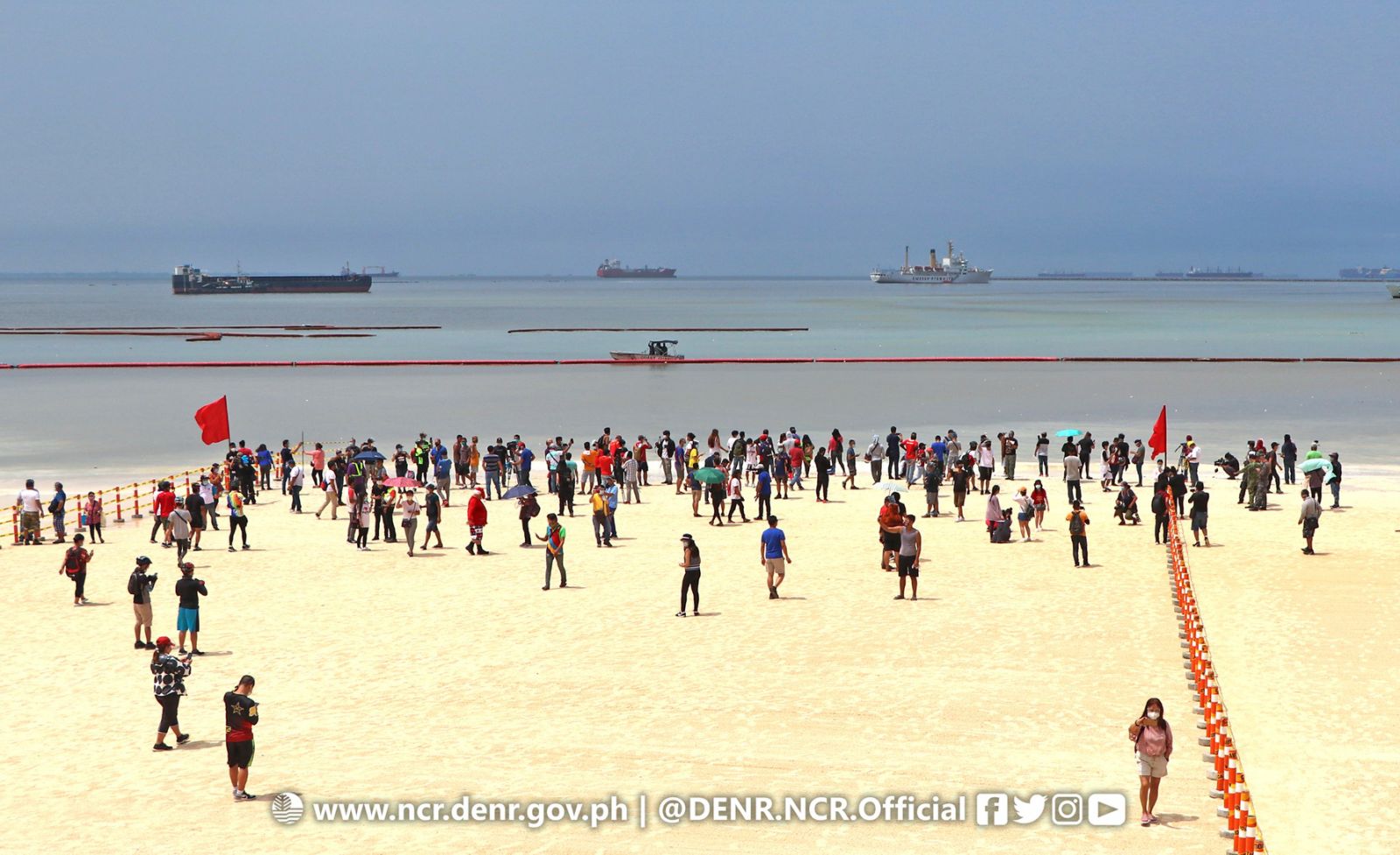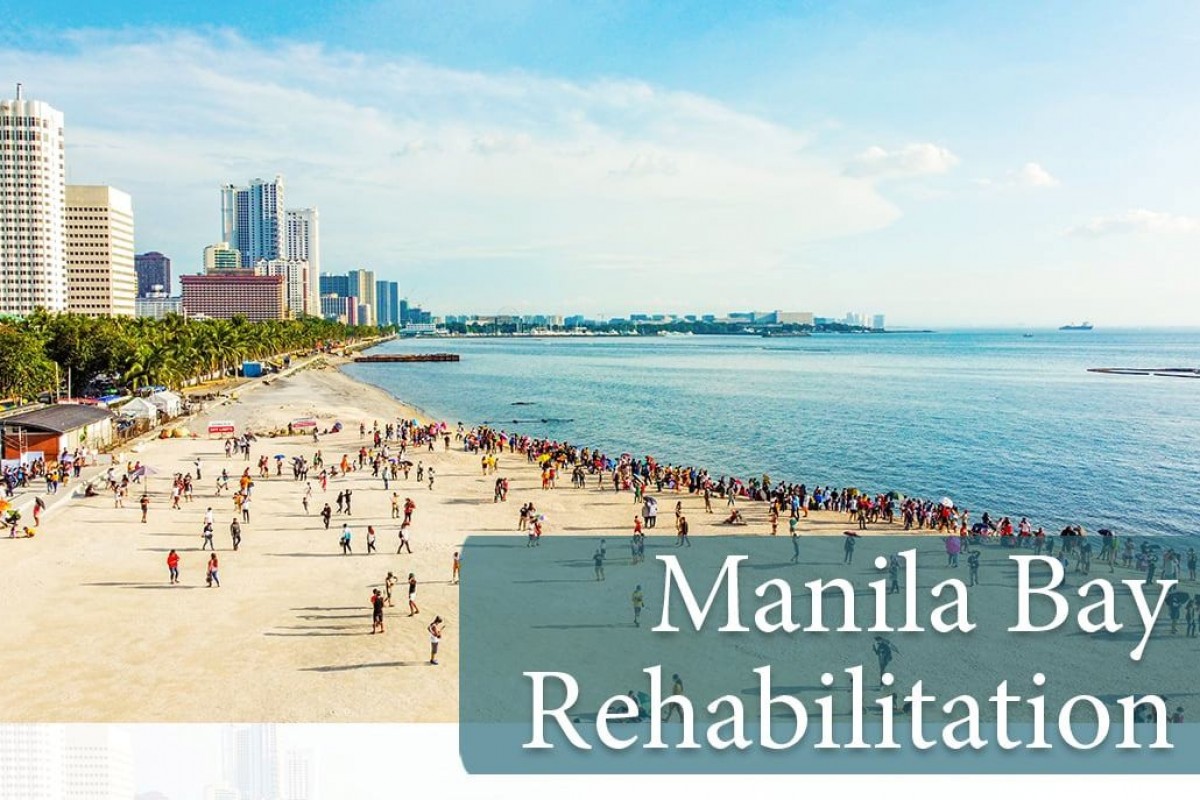(Photos courtesy of the Department of Environment and Natural Resources)
The What: The national government takes the lead in the conduct of proactive actions and responsive solutions towards the deteriorating environmental condition of the capital region.
The Why: Restoring the former splendor of Manila Bay will make a significant headway in alleviating the resource depletion of its ecosystem, especially when it comes to water quality.
The How: Establishing interdependent partnerships between and among the stakeholders of public and private sectors is seen beneficial in dealing with environmental apathy.
Where are we and where do we want to be in the country’s long-standing warfare against environmental abuse?
On Friday, January 27, the Manila Bay Rehabilitation initiative of the national government with a moniker “Battle for Manila Bay” is set to mark its fourth implementation year since the program launched in 2019.
A whole-of-society approach was the promise of the Department of Environment and Natural Resources (DENR) in devising a 5-year operational plan for the ecological restoration and the environmental beautification of Manila Bay.
Four years into the rehabilitation, here are the actionable ways taken to get there:
On Cleanup and Water Quality Improvement
At the beginning of the first quarter of 2023, DENR positively shared in a report that the waterways of Manila Bay have improved as a result of employing strategic waste disposal methods, constant water quality monitoring activities, and relevant geo-engineering interventions.
The primary indicator used to record this significant gain was the decreasing fecal coliform level in the surrounding coastal areas within the Manila Bay region. It is identified as a disease-causing bacteria found in wastewater that can harm those who engage in contact recreation such as swimming and skin-diving.
In the Manila Baywalk area, for instance, the most probable number per 100 milliliters (mpn/100mL) went down from 5.75 million to 658,000 mpn/100mL. This adds to the record of the National Capital Region (NCR) that has dropped by almost half from a previous 126,000 mpn/100 milliliters to 51,300 mpn/100 milliliters.
Meanwhile, as of 2021, DENR-NCR reported a regional gain of conducting a total of 1,726 regular cleanup activities that enjoined an approximate number of 50,639 volunteers from various cities. The total waste collected weighed 4,958,643 kilograms out of the 165,288 waste sacks. Had it not been segregated and disposed, these wastes will end up floating in the estuaries of Manila Bay along with the garbage pile up that already witnessed decades-long owner negligence.
To further address the waste crisis in the region, DENR-NCR also conducted a total of 416 waterways monitoring and patrolling through its respective Metropolitan Environmental Offices (MEOs). This is coupled with the recruitment of 1,812 Estero Rangers of NCR’s Environmental Management Bureau (EMB) to ensure the cleanliness of waterways.

On Rehabilitation and Resettlement
Ensuring the exact delineation of the legal easements of Manila Bay is one important step to measure the breath or geographical scope of rehabilitation. Therefore, DENR-NCR spearheaded the conduct of drone mapping that will provide for the basemap of easement recovery.
A total of 32 waterways were mapped and it covered more than 148 kilometers of legal easements which also identified the location of informal settler families (ISFs) as well as other private properties that have invaded either the easement, waterways, or both.
This led the region to operationalize an initiative called tagging, census, and validation (TCV) in directing the accurate identification of ISFs especially in Baseco Compound and Parola which are both located in the port area of Manila. It later identified a total of 2, 520 ISFs whose relocation will not only pave the way for the root solution of water pollution but also their access to basic services, particularly sanitation.
On Education and Sustainment
Knowledge of the situation alone does not generate motivation to integrate the best environmental practices as a way of life. Being aware of the worsening degradation, for example, will not automatically drive people to make informed decisions regarding responsible environmental protection except they are given actionable ways through which their ecological responsibility can be exercised.
With this in mind, DENR-NCR has forged mutually beneficial partnerships both between the public and private sectors to promote sustainable behavior change.
These include environmental education-centered projects such as the Project E-Smart that is used to supply reliable data for the ecosystem modeling of Manila Bay together with the conduct of Social Behavioral Change Communications by the Climate Change Services and Manila Bay Coordinating Office (MBCO) of the DENR Office of the Secretary (OSEC) which focuses on the assessment of the coastal residents’ knowledge and awareness.
In the private entities, DENR-NCR also signed a Memorandum of Understanding with BEST Inc. and IPM Group to closely work together for the promotion of the “Trash to Cash Back Program” which incentivizes the surrender of recyclable materials into environmental points that could be used to redeem products from accredited merchants.
The region likewise brought forward its MANILA BAYanihan Stakeholder Partnership Recognition Program that taps deep into the environmental corporate social responsibility (ECSR) of various partners from the private sector.
The notable byproducts of this public-private partnership was the voluntary commitment to information dissemination on proper solid waste management by the Rotary Club of Rockwell Makati and the biodiversity conservation programs that were supported by the Wild Bird Club of the Philippines and Society in the Conservation of Philippine Wetlands, to cite a few.
Taking all these coordinated environmental responses into account, did we actually undouble the troubled waters? The answer is that we are a step closer to the goal and the farther we go, the higher our chances and opportunities to build an environmentally sensitive society.
These long-term strategies serve as a compass – they provide stakeholders with an opportunity to present each plan to address environmental issues connected to urbanization.
To win the battle against climate change, we have to start somewhere, and winning the Battle for Manila Bay, we have to start thinking long term. (PIA-NCR)



